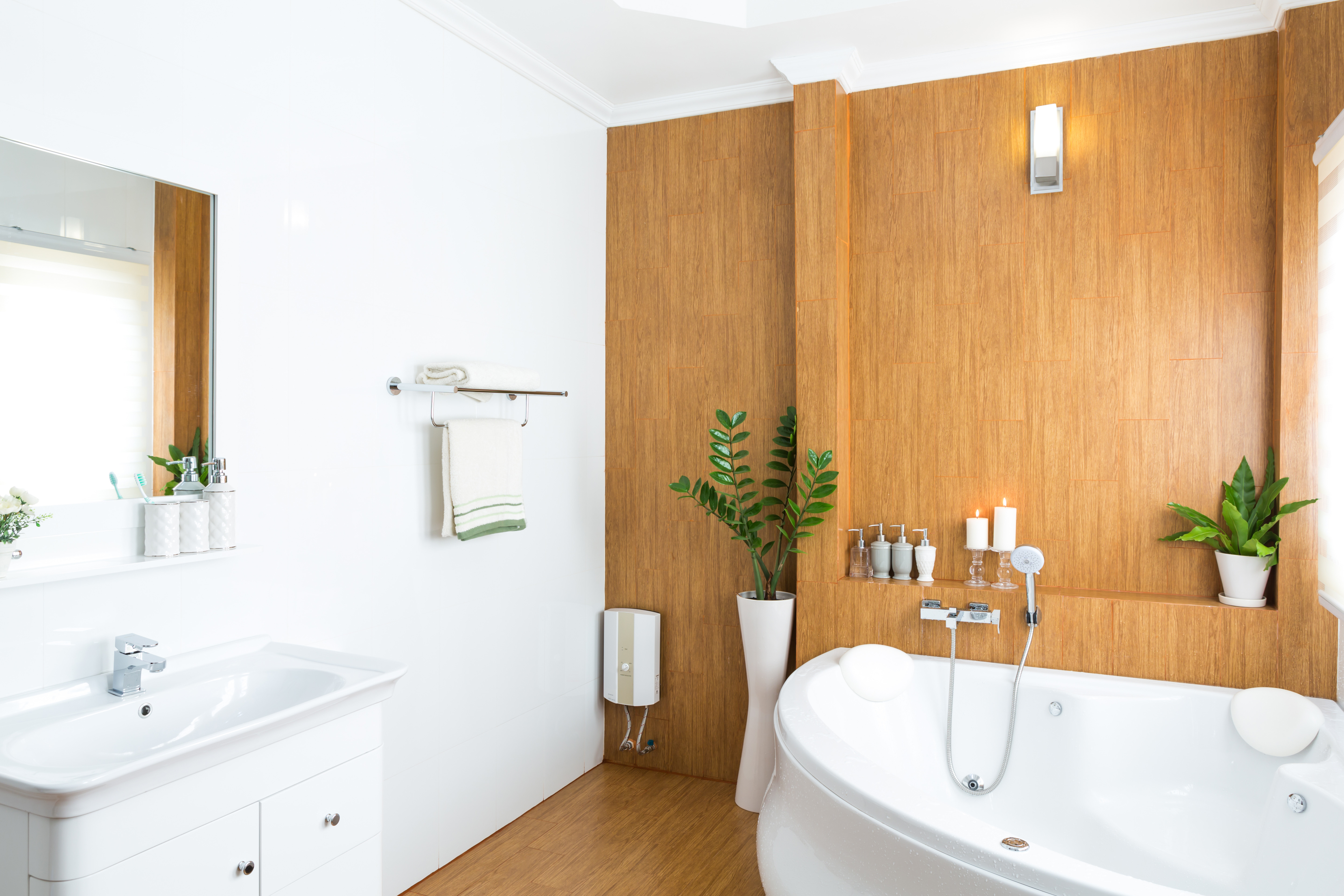
Wood is a very noble material, evoking closeness to nature and elegance. Wooden elements give the impression of cosiness and warmth in the interior, while adding craftsmanship. However, wood also requires special care to maintain its beauty for longer. It is harmed by moisture and too frequent exposure to water. Therefore, its use in bathrooms is generally avoided. So what appears in place of wood?
Wood in the bathroom – is it possible?
A respected and luxurious material, wood works excellently in various parts of the home. Its main advantages are undoubtedly its aesthetic qualities, which give the interior both a chic elegance and a sense of homeliness and comfort. Not everyone can afford this type of solution, as they tend to be quite expensive, especially if you want to maintain their durability. Soft wood, such as lime or pine, can be damaged in a short time. Moreover, almost every type is especially susceptible to moisture and, if not properly maintained, can crack. To protect wood from the unwanted effects of water, it should be regularly oiled or protected with special coatings for this type of material. So is wood in the bathroom a pointless solution? It depends. Wood sourced from tropical trees stands out for its higher resistance to water-related damage, but it still requires constant care. There are known bathroom design arrangements using this material, designed by representatives of the Bauhaus. However, few can afford such a solution in terms of both execution and maintenance. Is there any substitute for this noble material on the market that can easily be used in the bathroom?
Alternatives to traditional wood
Natural wood has many substitutes. One of the first that comes to mind is panels, which are closest to the original. However, they rarely appear in bathrooms, as most of them also have poor resistance to permanent water exposure. Of course, there are high-quality panels, but they are more likely to work in the kitchen, where they won't be exposed to daily splashing. In the context of furniture and countertops, chipboard panels covered with decorative laminate are a common alternative. The more expensive ones perfectly mimic even the grain of wood. They will work in the bathroom as fronts for wall-mounted and freestanding cabinets on legs. But what if you dream of a wooden floor in the bathroom? Is there a solution for that? Yes, they are ceramic wood-effect tiles. With them, you get the aesthetic attributes of wood and the waterproofness of traditional tiles.
Popularity of wood-effect tiles
Ceramic wood-effect tiles are manufacturers' response to the needs of modern bathrooms. With the proliferation of the Scandinavian style, based on natural materials and the cosy vision of a home spa, people began to desire wooden elements in bathrooms. At the same time, few can afford the regular maintenance of real wood. Moreover, the substitutes available until recently do not work on surfaces such as floors or walls. By combining the functional advantages of ceramics and the visual appeal of wood, these tiles work great in both modern interiors and more traditional arrangements. These features quickly made them a bathroom hit, and manufacturers began racing to create ever more perfect forms.
Advantages and disadvantages of wood-effect tiles
Like any product, wood-effect tiles have their pros and cons. Like regular tiles, they are easy to clean and resistant to moisture and mould. They don't require much attention or particularly difficult and complicated maintenance. Unlike natural wood, they are resistant to the effects of heat, allowing you to run underfloor heating beneath them. On the other hand, this means they are rather cold, and in the summer months, standing on them with bare feet may not be the most pleasant experience. Wood-effect tiles come in colours and patterns that strikingly resemble various types of natural wood. Therefore, they will serve for many years, even if the overall bathroom concept changes. Additionally, various colour variations and white counterparts with wood patterns are available on the market, which will appeal to those who like avant-garde arrangements.
A bathroom using wood and wood-effect tiles
Wood-effect tiles work excellently on floors or walls. You can apply them anywhere water frequently comes in. Remember to consider both the aesthetic and functional aspects when choosing. For floor tiles, these will be technical parameters such as abrasion resistance and anti-slip features. You can also complement the arrangement with a wooden countertop in a similar shade. However, remember to place it relatively far from the water source. If it is to be the base for a countertop washbasin, ensure it is deep enough and matches the tap, so it doesn't splash a lot of water around.


















